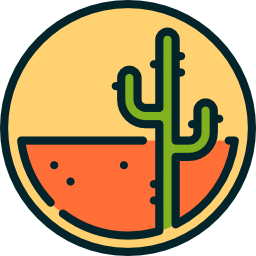How do you get online browsers to read more of your blog and move on to reading different pages of your website?
In Google Analytics, this is called the Visitor Flow. It's a helpful tool for understanding how readers move through your website. You can see which pages naturally lead to others by what percentage of people choose to click on more links.
Brick-and-mortar retail employs actual people to help customers through their journey. They assist buyers in finding what they want and learning all that they care to know about a product. Lowe's, Apple, Nordstrom, and other successful retailers have an education-heavy training program for new hires. They know that this translates into education for the customer. Real people can adapt to the customer's needs and experience level. In 2014, your website cannot.
But what if you could make it seem that way?
The Onion
As we famously learned in Shrek, onions have layers (just like ogres). It's a good metaphor for how your website should work. Think of the layers as different levels of content that they can click through. Sometimes, a user might click within the same level and stay there for awhile. But no matter what, those layers should always take them to the core of your onion: the page that turns them into a conversion.
Top Layer
The top layer is your homepage and any landing pages that users might land on through PPC or social media campaigns. These should be relatively content light (yes, the content writer just argued in favor of fewer words). Big pictures and infographics are great here. You have less than 30 seconds to capture attention of a reader who has no idea what your company does. Make it simple. No big words - unless they're Intrigue Words (more on that later).
And, of course, provide lots of links to plenty of different 2nd Layer pages. Let them learn about what they're most interested in. The user can't ask your website a question like they do a store associate, so let them choose where to go next.
2nd Layer
Here, you can start to get a little more technical. Throw around some words that the user might not know. By getting to the 2nd layer, they obviously want to learn more. Tease them a little bit with even more knowledge that they can learn about.
Subsequent Layers
Not every website needs layers below the 2nd level. Honestly, not every website needs layers at all. Single page websites are popular now. However, The Onion Theory is still useful for deciding how to deliver the user experience on these pages.
Layers between the 2nd and the Core should get even more technical. If you can't say it on the second layer succinctly, that's when you need a more in-depth page. A good example would be for a restaurant/brewery. Their Top Layer would be a welcome page for their website that includes hours, locations, and delicious pictures of food. The 2nd Layer is a breakdown of the food menu and the drink menu. From the drink menu, the user could get to a special page dedicated to their house-brewed ale (aka the 3rd Layer). The CTA on every page is to book a reservation either online or through OpenTable. That's the Core of their onion.
The Core
All roads lead to Rome, and every website leads to a conversion page. Otherwise, why do you have a website? Good websites (and good copywriting) aren't cheap. You want to make sure that your website is making you money, so put a good core into your onion. Then use Google Analytics (or someone who knows what they're doing) to measure how well your website does.
A Few Rules for The Onion Theory
- Rule #1 - Your onion should have a few different Top Layers. Users coming from search engines, paid advertising, direct mail, and social media should probably all land somewhere different. Play to each audience differently. You can think of these acquisition methods as your pseudo-Top Layer. But in this article, the layers refer strictly to website user experience.
- Rule #2 - Only link to a parallel layer page and lower pages. Don't provide opportunities for users to go back up a layer. You website should only point to your Core.
- Rule #3 - Some organic onions have two Cores; so can your website. If you sell product and provide email sign-ups, you have two Cores.
- Rule #4 - If you're inexperienced, playing with The Onion too long can make you cry.
Hire someone who knows how to push customers in the right direction. I have plenty of experience with onions. I can even make a good soup.
But now we're mixing metaphors. Which is another thing you shouldn't do on your website.
